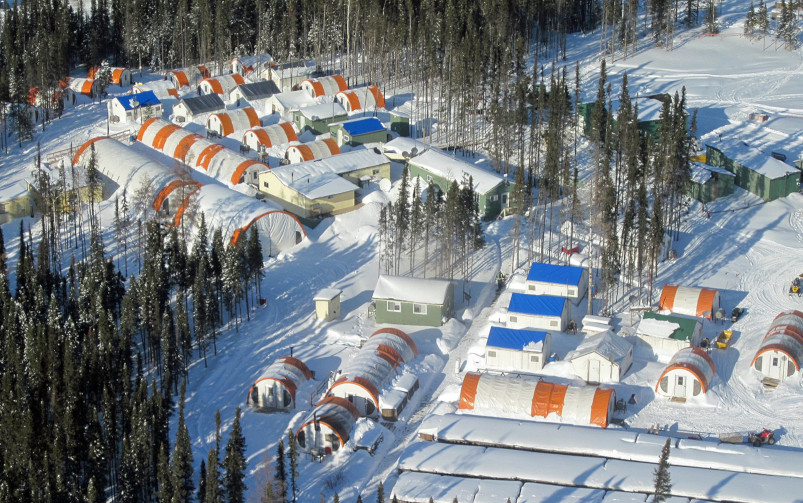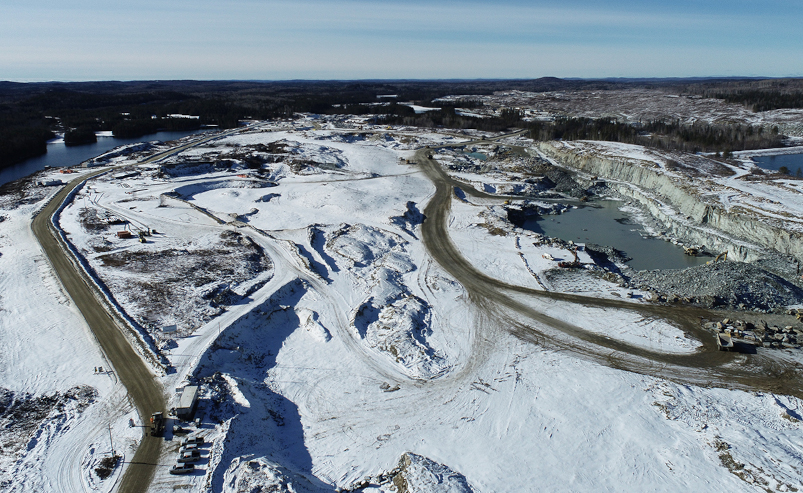A strike at BHP’s Escondida (pictured) and Spence copper mines in Chile has impacted copper prices by lowering supply. Courtesy of BHP
Commodity metals have had a rough time over the past couple of years. A lengthy trade war between the United States and China during Donald Trump’s presidency, followed by a global pandemic that closed borders and shut down production in many countries did little to assuage the fears of worried economists.
In 2021, however, there has been cause for much more optimism. Prices for industrial metals such as copper and iron ore have set new all-time highs. Gold prices have continued to remain high. Battery metals have seen increases in demand. Experts are theorizing as to whether the market has entered a new commodities supercycle.
According to Marc Desormeaux, senior economist at Scotiabank, there are two main factors at play that have led to this rise in commodity prices.
“The main reason for [the price gains], at least at the start of this year, relates to the strengthening of the global economic backdrop,” Desormeaux said. “We’re seeing, in Canada for instance, more and more data coming out of the first quarter showing that we continue to expand economically even though lockdowns were in effect for the second and third waves. Vaccination rates are picking up and we’ve got the U.S. fiscal stimulus package coming online, which is expected to contribute significantly to economic growth. This has led to some optimism and improved demand outlook, and that’s a major factor behind the coordinated rise in commodity prices we’ve been seeing over the past few months.”
It is not only the demand side that has been bringing prices up. The major infrastructure plan expected to be passed by U.S. President Joe Biden’s government will require large amounts of industrial metals to complete its construction projects, and concerns about supply are having an impact as well.
Copper, for instance, hit an all-time high price of US$4.74 per pound back in May 2021 after sitting at US$2.20 in March 2020 following the beginning of the COVID-19 pandemic, according to Nasdaq. Copper is used heavily in construction and manufacturing, but mine shutdowns during the pandemic and labour strikes at BHP’s Escondida and Spence copper mines in Chile have limited the supply, driving prices higher.
Iron ore also hit an all-time high of US$218.38 per tonne in May, according to Business Insider, based off a large increase in steel production coming out of China.
“In China, iron ore is a key input into the production of steel. Steel is being produced significantly as part of the fiscal stimulus and the recovery of the industrial sector activity in China, so that’s been a major driver,” Desormeaux said. “On top of that, supply has been pretty tight coming out of Latin America, and Brazil in particular. So, you’ve got the demand side and the supply side pressures contributing to prices.”
Iron prices have since dropped closer to US$200, and Desormeaux expects the current level of speculation in the market to slow as more supply comes online, which could dampen the price further.
Related: Newmont has tied its US$3 billion credit facility to its ESG performance, potentially setting a trend for miners to back up their talk of sustainability
Metals have also benefitted from the move of many industries to lower their carbon emissions and invest in renewable energy sources. Zinc and nickel have seen some interest due to their potential to be used in batteries for electric vehicles, though projections for the minerals have been more muted. Zinc has been strengthened, trading around 30 per cent higher than its average price last year of US$1 per pound, but the price could dip once again as the supply increases.
“Over the medium term, we see some downward pressure on prices related to capacity expansions that were made prior to the pandemic, and as more and more supply comes online, we see that kind of contributing to less tightness and more modest pricing gains over the medium term,” Desormeaux said. Nickel is a similar story, with outputs from Indonesian operations continuing to climb.
Gold, which has been a strong performer for quite some time now, has seen some recent volatility in its price in 2021, falling from highs of approximately US$1,950 per ounce in January to less than US$1,700 per ounce in March and April before climbing back up to around US$1,900 per ounce, according to Goldprice. Some of that volatility Desormeaux attributes to the massive cryptocurrency sell-off that took place in May, which drove the demand for gold as a “safe haven” investment. New monetary policy out of the White House, such as a possible higher capital gains tax and rising inflation has further supported the price of gold. Silver has seen some gains as well for much of the same reasons, climbing from around US$18 per ounce to around US$28 per ounce in June, according to Kitco.
“Silver is a precious metal as well, it’s impacted by the U.S. dollar and inflationary indicators,” Desormeaux said. “But in addition to that, it’s also an industrial metal. It has a number of different industrial applications, so we see support for prices for silver in the coming years related to that same sort of industrial sector recovery and expansion.”
As vaccination rates continue to climb and countries begin to recover from the effects of the COVID-19 pandemic, it appears that there will be much to look forward to in the metals markets.




